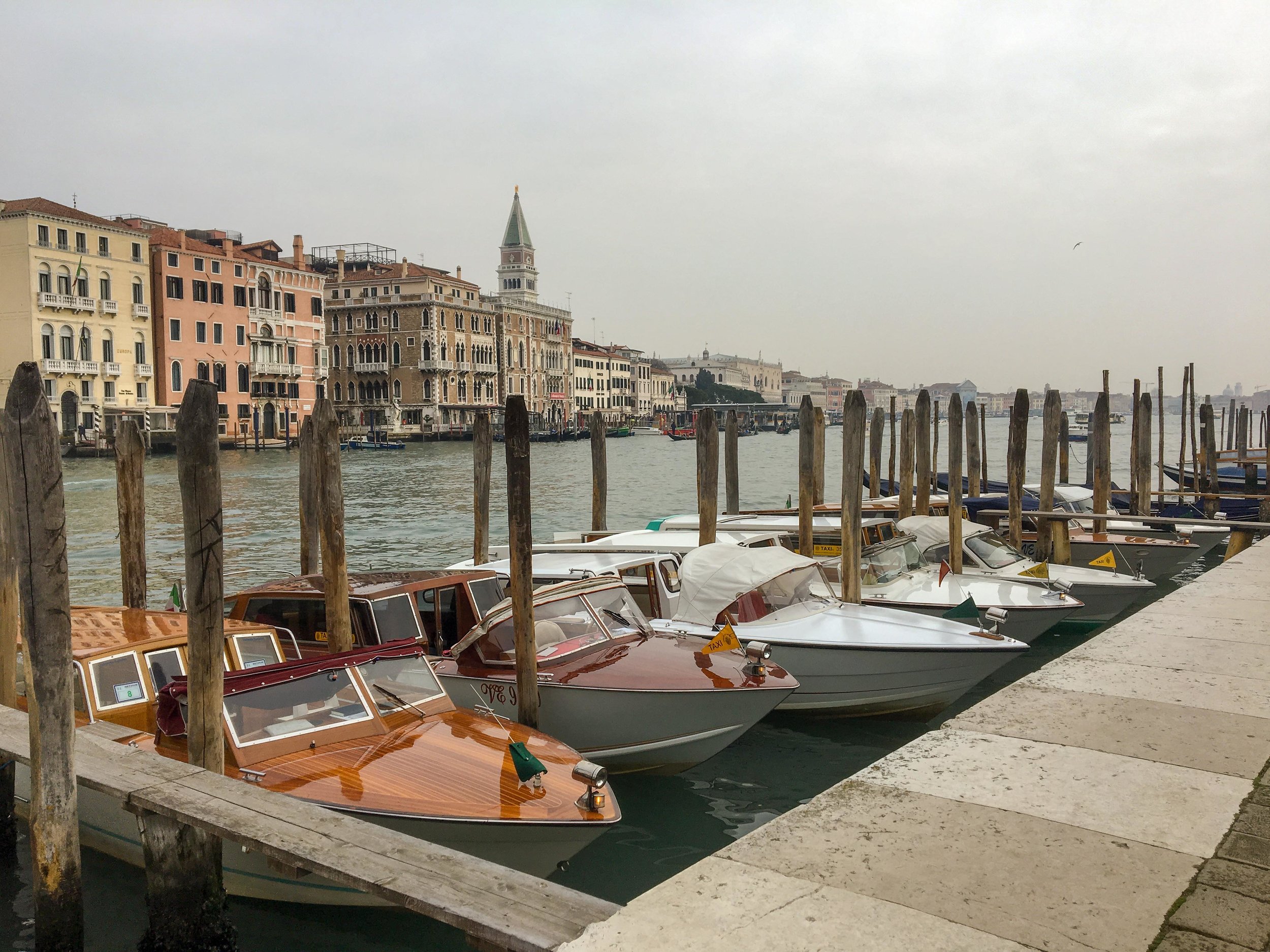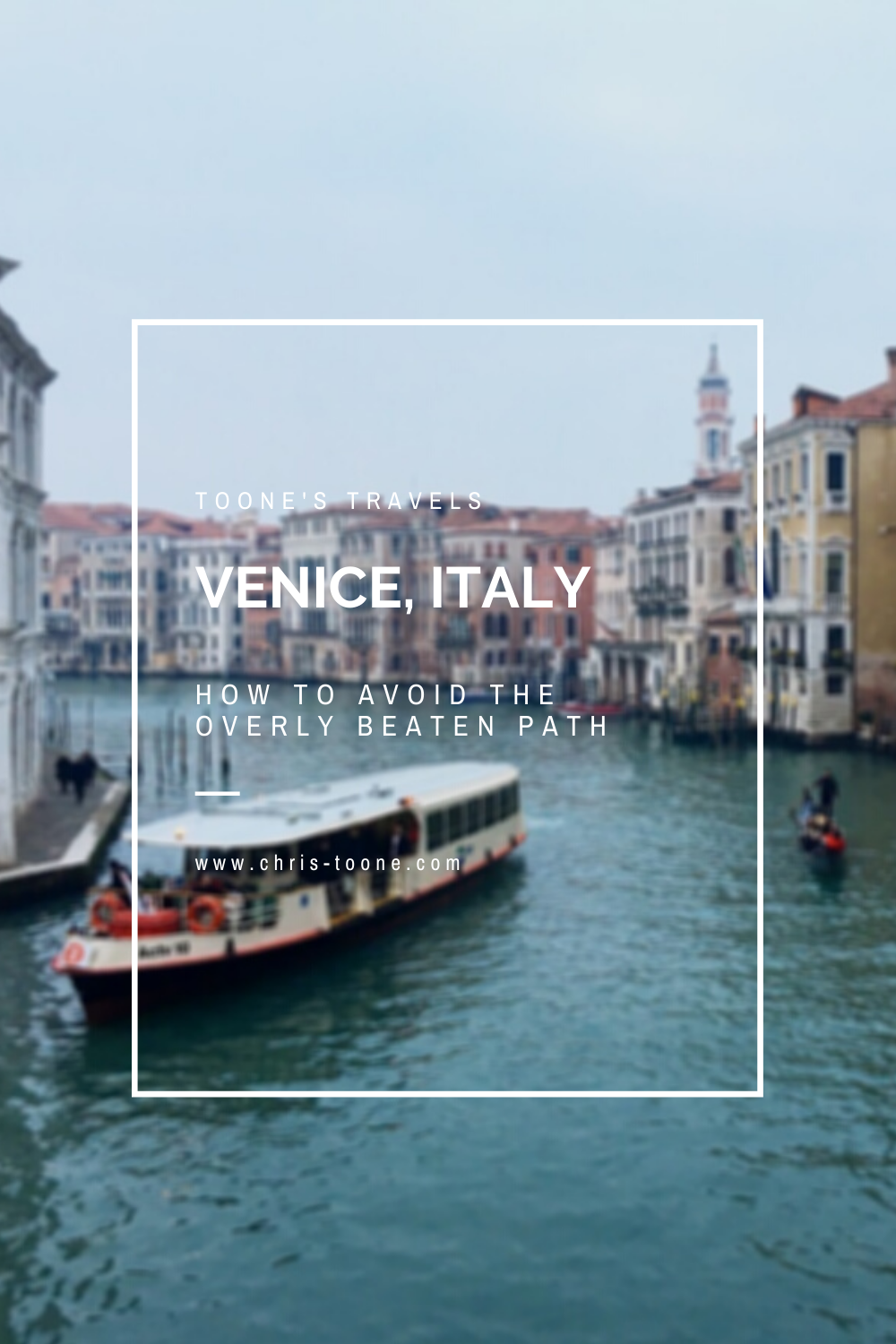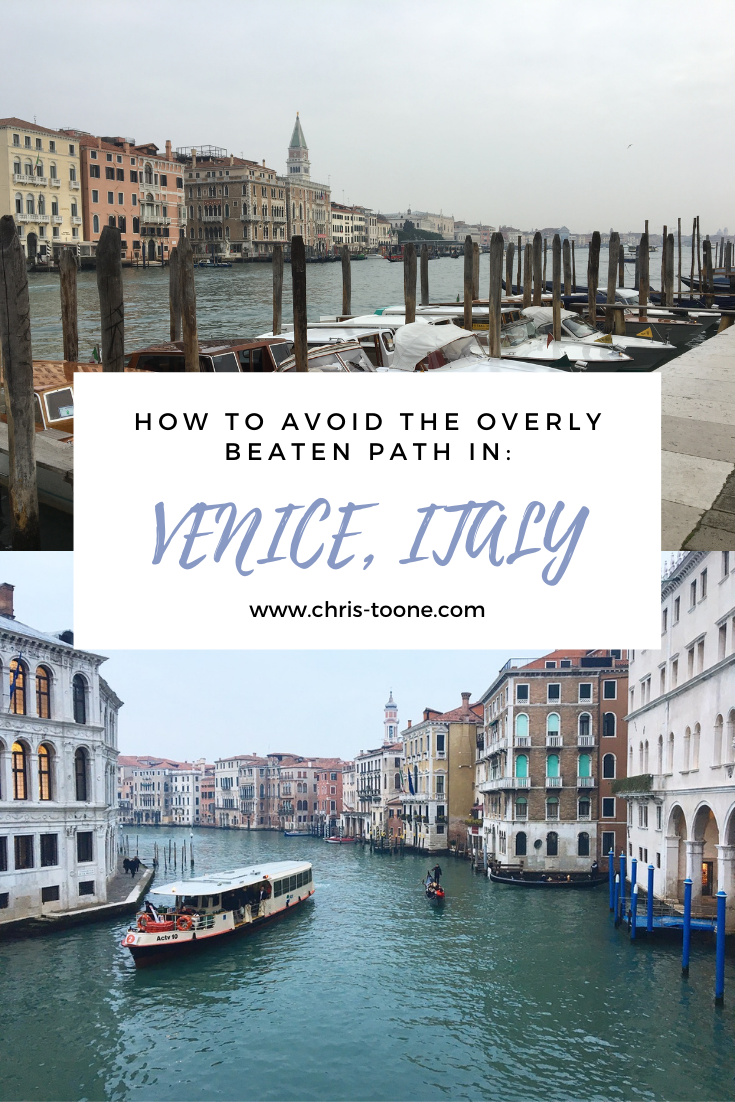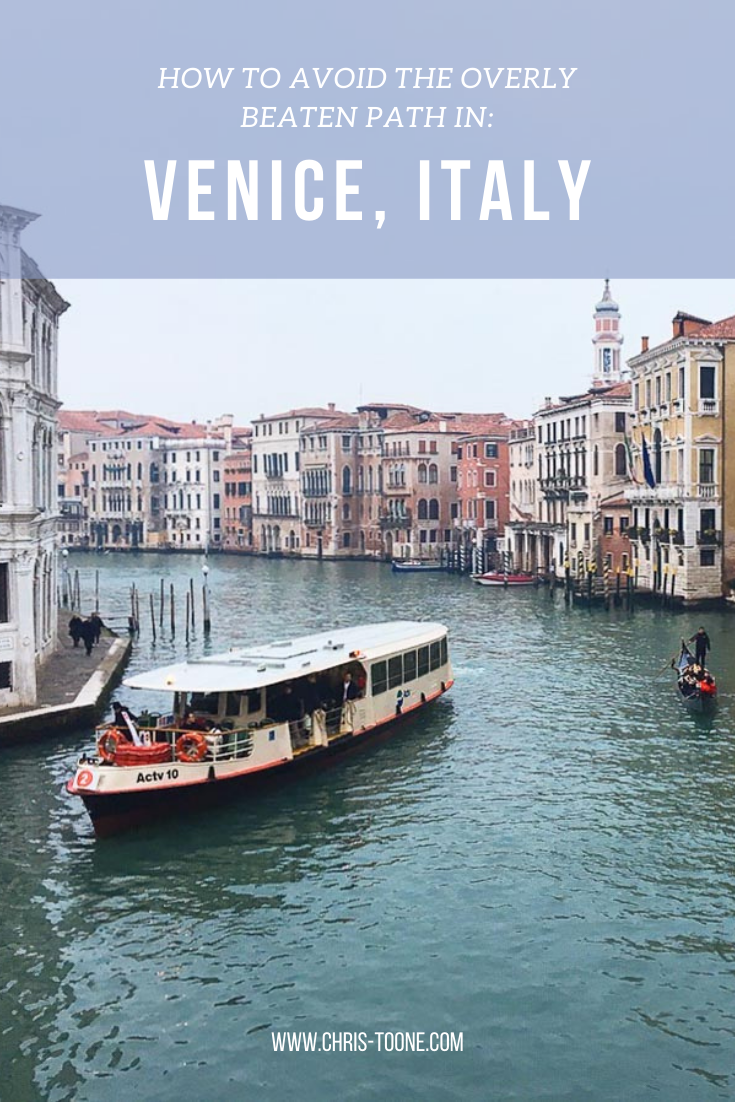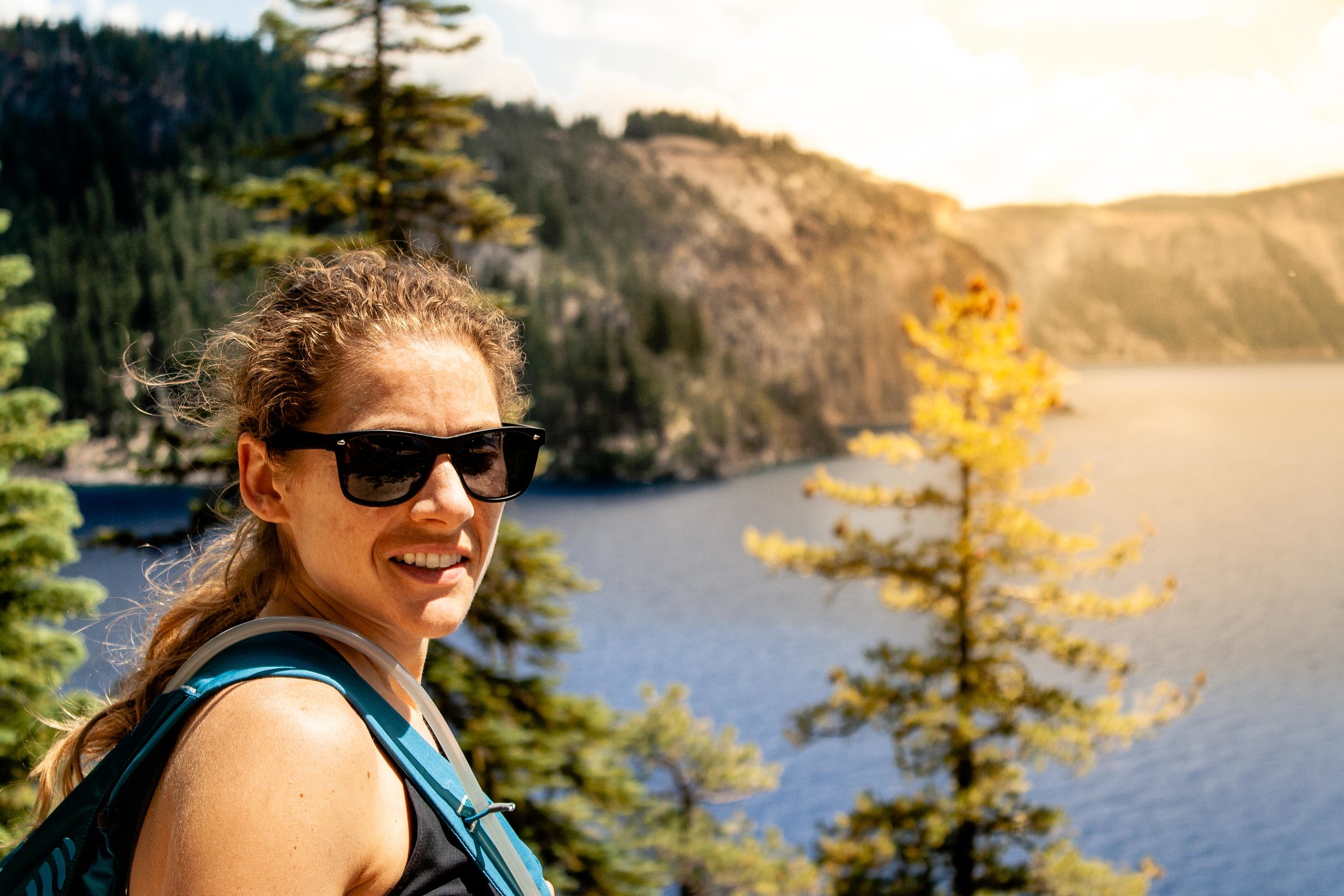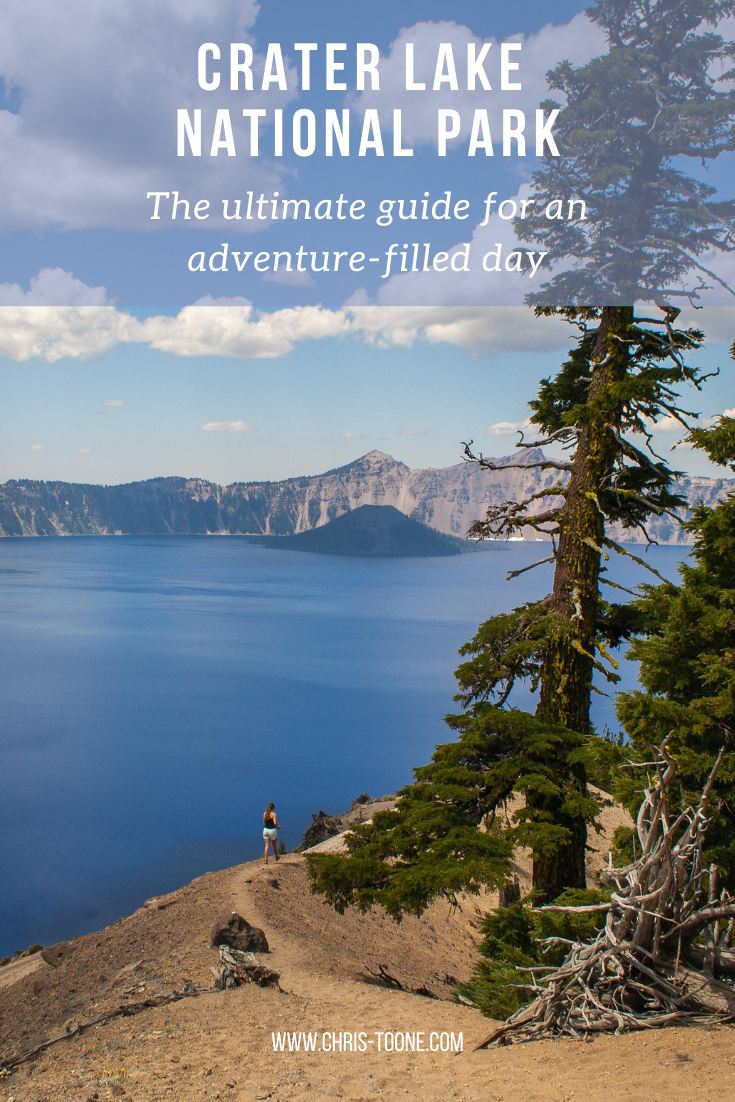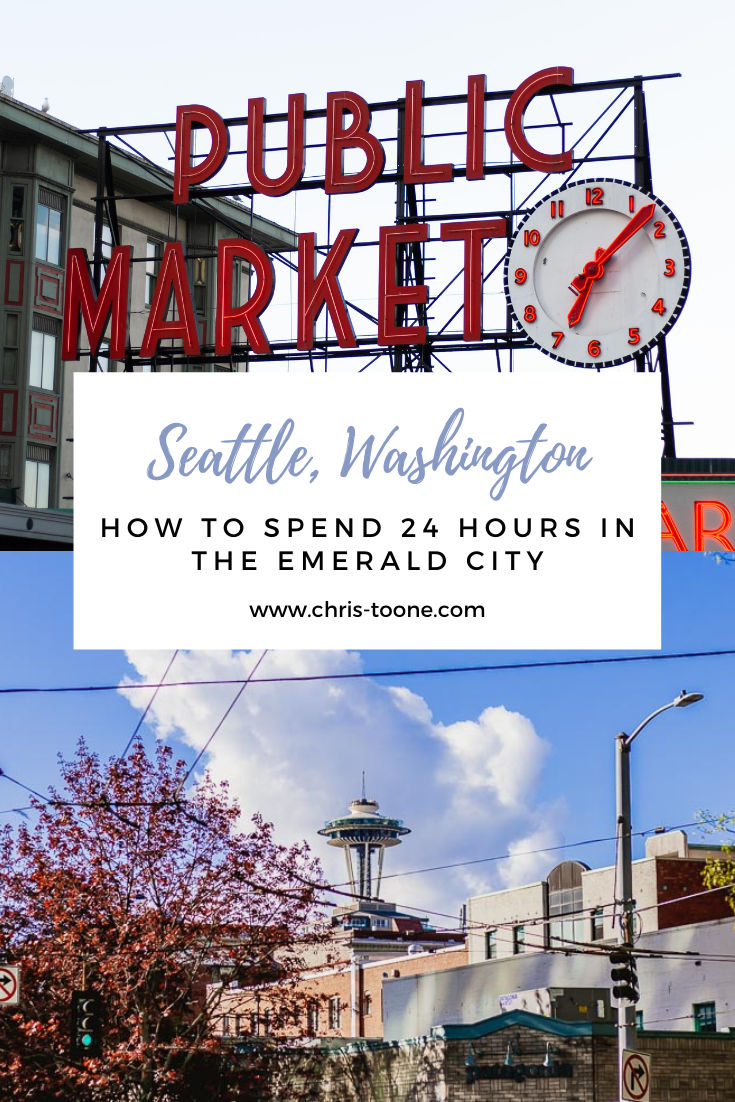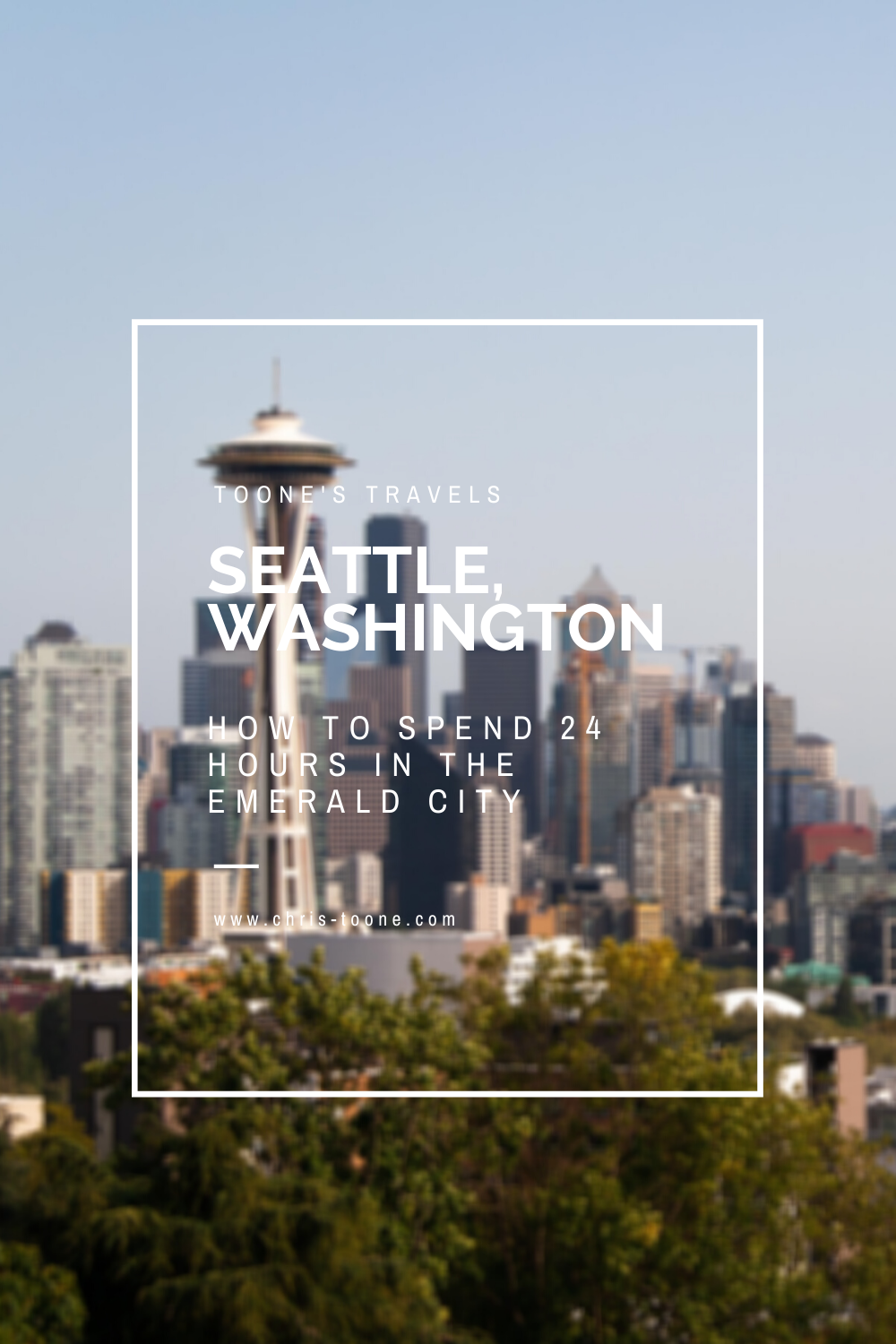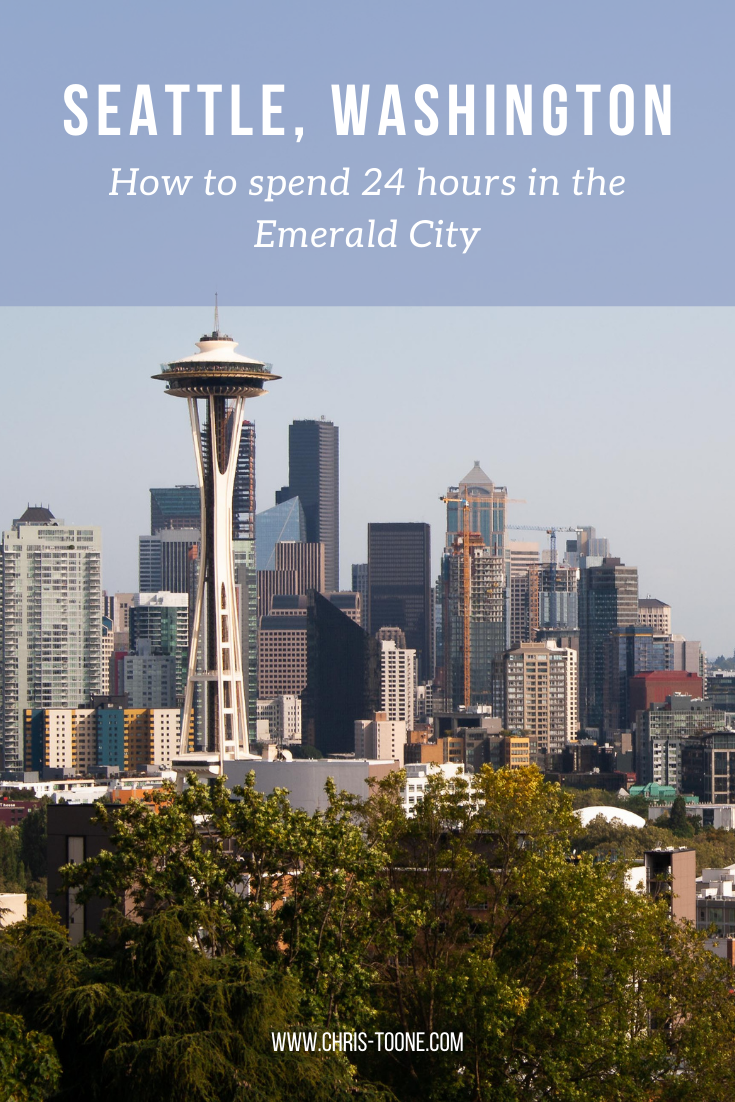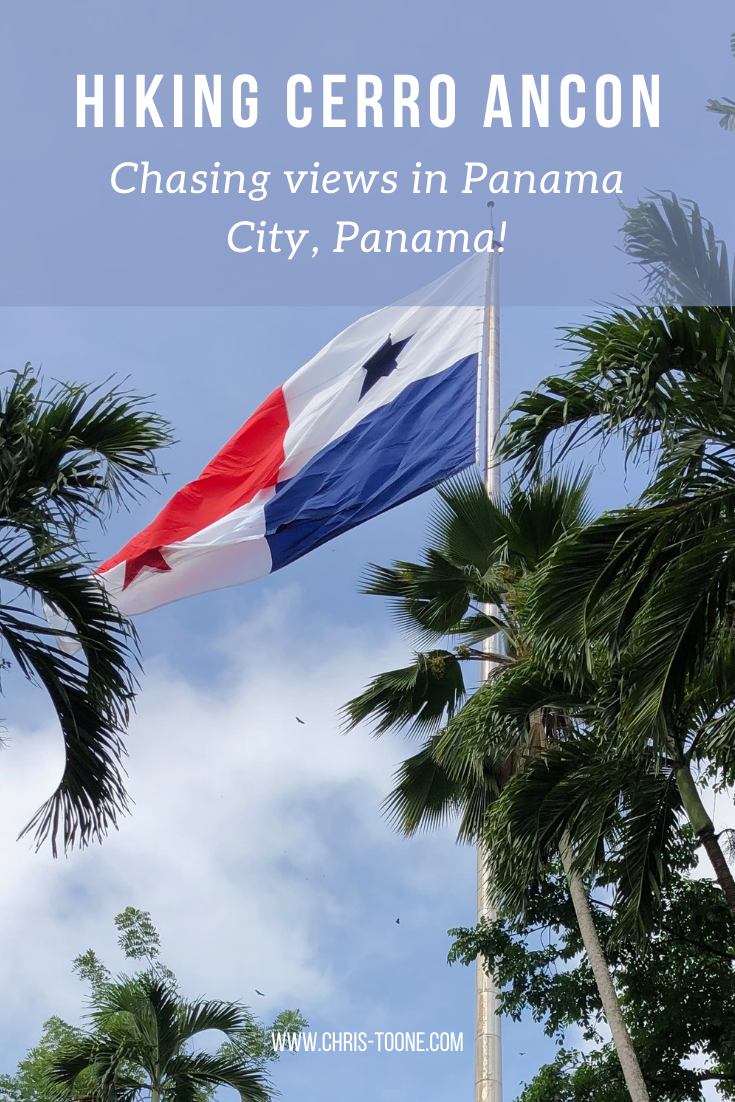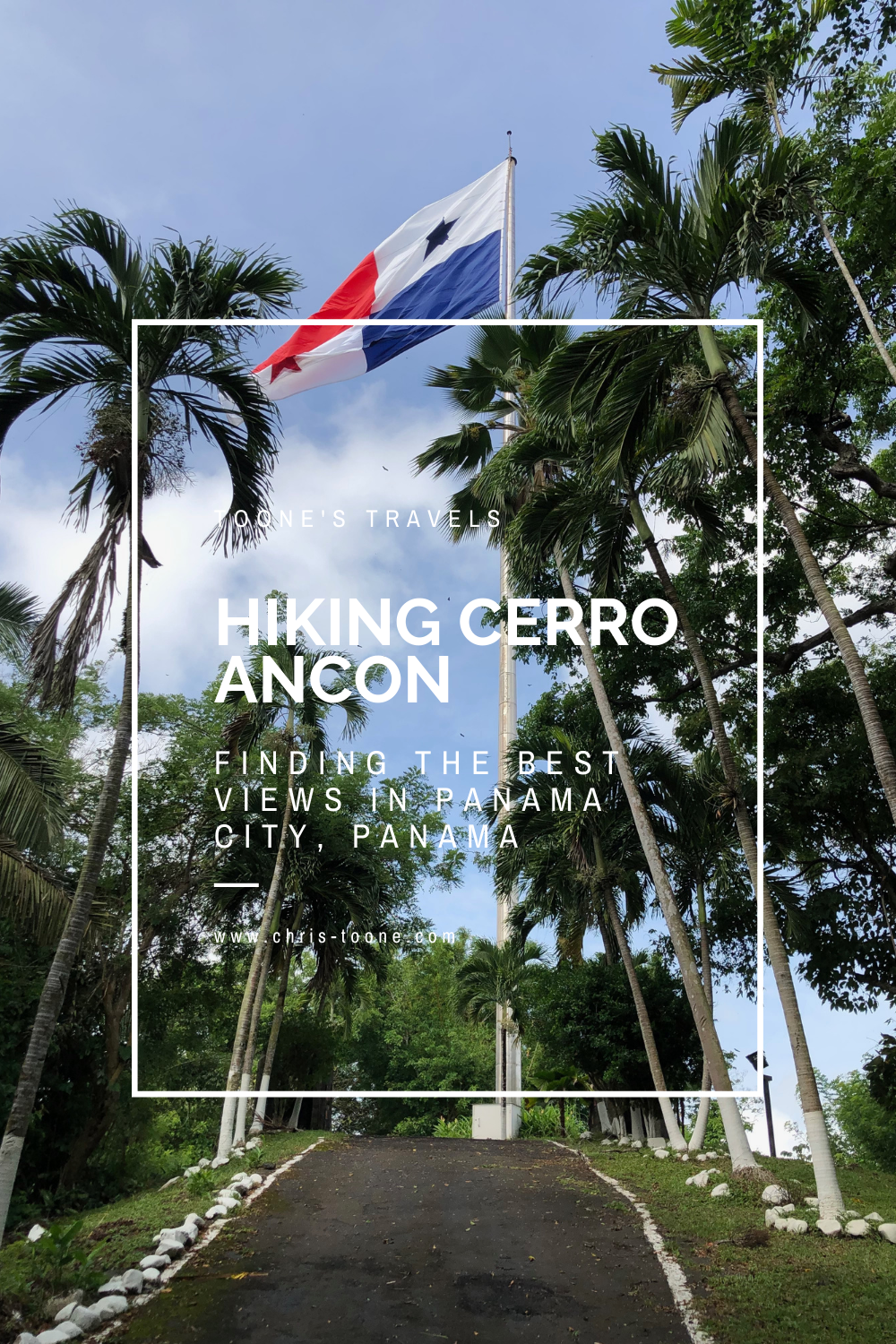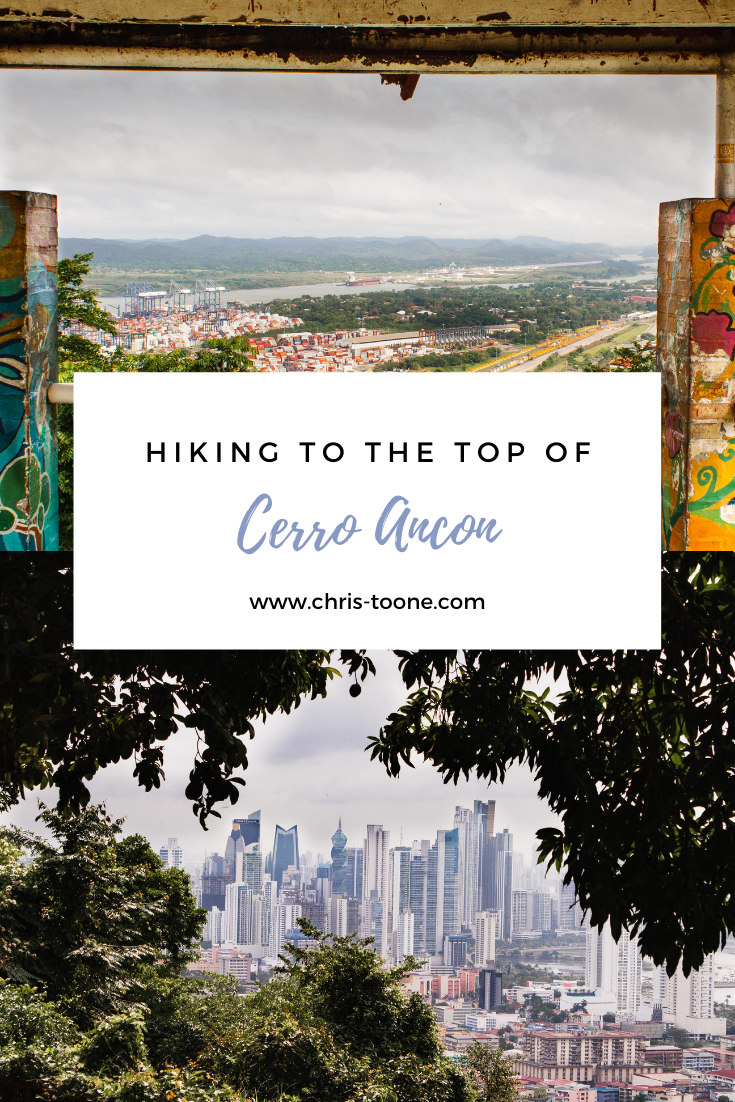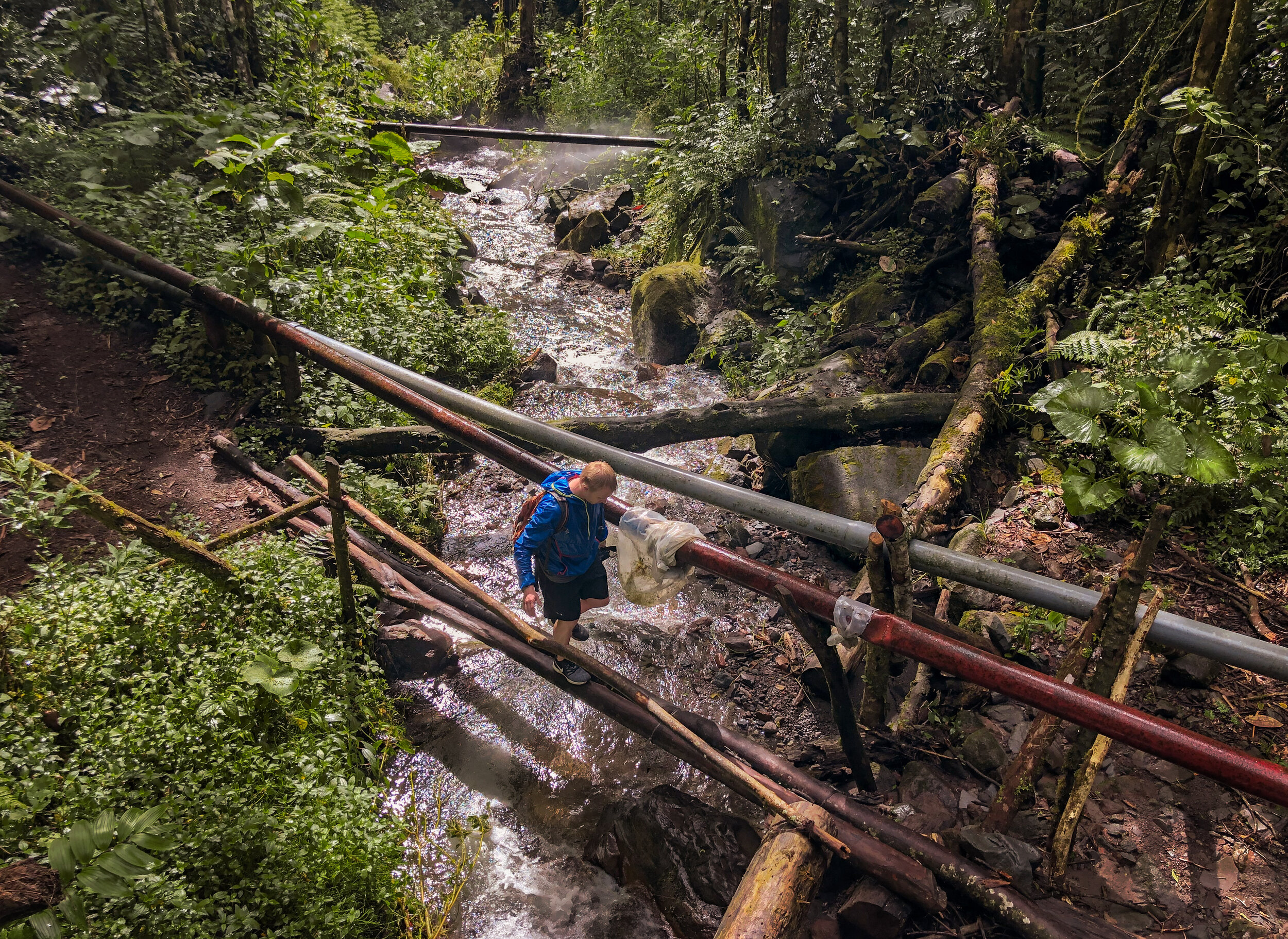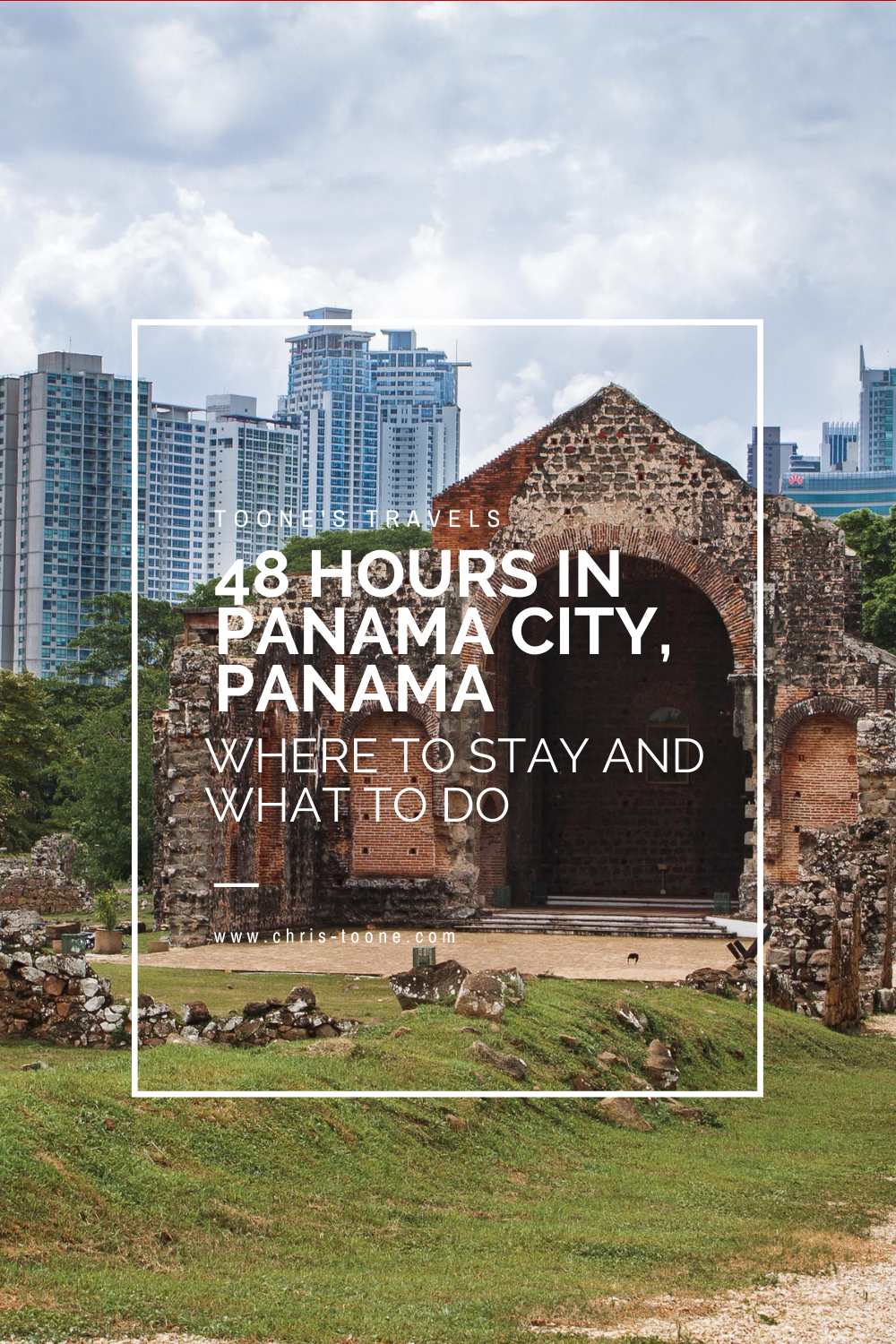Wandering in Venice, Italy: How to avoid the (overly) beaten path
Stepping foot into Venice is like entering an alternate universe. A world where the mundane is replaced by endless wonders; where even the simplest of things, whether a door or a narrow street, are transformed into a romanticized version of their previous selves. With so much splendor to offer, it’s no wonder why more than 36 million tourists are flocking to the Venetian canals on an annual basis. We must do our part as mindful travelers to reduce our footprint and protect the integrity of the people. Here’s how to ethically plan your next trip!
Please note: All info below is accurate as of May 2023
Stepping foot into Venice is like entering an alternate universe. It's a world where the mundane turns into endless wonders, where even the simplest things, whether a door or a narrow street, are transformed into a romanticized version of their previous selves. With so much splendor, it's not hard to imagine why more than 36 million tourists flock to the Venetian canals annually. In fact, between April and October, nearly 32,000 cruise ship passengers disembark in the beautiful city per day.
There has been much debate over tourism in Venice in recent years and the local government is consistently exploring ways to minimize the burden that foreigners leave behind. Day-trippers will need to pay between 3 and 10 euros once the newest tax system is activated, and air travelers will need to pay a surcharge of 2.50 euros to depart the Venice Marco Polo Airport . In 2018, the city went as far as experimenting with turnstiles during a holiday weekend, restricting tourist access to more local parts of the city in an attempt to give residents a reprieve from the endless stream of international visitors.
Despite these efforts, the cruise ships keep docking and the tourists keep coming. Local Venetians continue to flee to mainland Italy at an alarming rate, often disgruntled at the feeling of living in an “open-air museum.”
These problems won’t be resolved anytime soon. While the local government continues their efforts, here are some helpful tips and tricks to get the full Venice experience without contributing to the demise of the place we all covet so much!
In this post we’ll discuss:
WHEN TO GO
Tourist season in Venice lasts from April to October. During this time, 13-story cruise ships cast looming shadows over St. Mark’s Square, a steady stream of selfie-taking foreigners disembarking from these modern marvels on a daily basis.
This is when overcrowding is at its worst. Sure, the weather is beautiful more days than not, but do you really want to be bumping into droves of sweaty human beings as you try to maneuver across the narrow bridges, elbowing people out of the way as you fight for even a glimpse of the Bridge of Sighs?
Instead, consider planning a visit during the shoulder season; either March or November. These months tend to be less crowded due to the cooler temperatures, with highs hovering around mid to upper 50s. It's a small price to pay to truly experience the magic of Venice without thousands of others around.
Pack a light jacket, bask in the sunshine as you wander along the water, and, if all else fails at keeping you cozy, don’t forget how cheap the wine is there! There are plenty of ways to enjoy your time in Venice without the 70 degree temperatures and high humidity of July.
My first visit was in March and the second one in February. Each time included sunny weather, lower prices, fewer crowds and, most importantly, no cruise ships. It wasn’t hard to find an empty piazza to enjoy a mid-morning Aperol spritz!
WHERE TO STAY
Venice’s historic city center, or centro storico, is divided into six main districts:
San Marco - 5 star hotels and tourists galore
Cannaregio - known as an old 16th century Jewish Ghetto
Castello - stretches eastward from the tourist center
Dorsoduro - the university district
San Polo - Rialto Markets and surrounding area
Santa Croce - close to the bus terminals
If looking to avoid crowds, I’d recommend searching for accommodation in Cannaregio. Not only does this neighborhood provide everything you need - easy access to the Vaporetto (water taxi), quiet streets and alleys to wander, shopping along the Strada Nova, and more - staying here also helps to disperse the effects of tourism beyond the saturated San Marco district, leaving a little more space for the locals in that area to breathe. Consider it a way to respectfully reduce your travel footprint.
Cannaregio is located on the northern end of the city, adjacent to Venice’s Santa Lucia train station and Piazzale Roma bus terminal. Both are just a short 10-15 minute walk away. Once in the neighborhood, you’ll find it simple to navigate your way to San Marco (this is where many of the “must-see” sights are located) via land or boat. Several of our days were spent lazily wandering the surrounding streets of the old Jewish Ghetto, admiring the architectural wonder that is Venice as a whole.
EXPLORING OFF THE BEATEN PATH
The fact of the matter is that Venice is experiencing an age of over-tourism, but going against the flow and looking beyond the “top 10 sights to see” is just one way in which we can combat the negative effects.
Think of it like this: If 1,000 people are running up and down an ancient staircase each day, those steps will likely require more routine maintenance whereas if this number were distributed across several other lesser-known, but equally magnificent staircases, the overall cost of maintenance would decrease, removing the financial burden from those that care for it.
Am I saying to avoid places like St. Mark’s Square altogether? No, not! I’m simply advocating that going beyond the crowds will lead to a better experience for you as a traveler as well as the local people. It doesn’t have to be one or the other.
Here are some helpful hints to uncover the hidden gems of Venice — it’s easier to get off the beaten path than you might think!
“Venice never quite seems real, rather an ornate film set suspended on the water.”
1. Avoid the lines of St. Mark’s Campanile and head to San Giorgio Maggiore instead
San Giorgio Maggiore is a small island located across the water from St. Mark’s Square and is easily accessible via Vaporetto or private water taxi. Wandering the grounds of the church is worth the trip in its own right, but the real thrill is riding the elevator to the top of the bell tower and taking in the sweeping views of Venice below. A truly unique way to see the city in all its glory.
Here’s everything you need to know to visit:
Opening Hours:
May - September: 8:30am - 6:00pm; Sundays: 2:00pm - 6:00pm
April - October: 9:00am - 7:00pm; Sundays: 2:00pm - 7:00pm
Getting There:
The island is accessed via Line 2 on the Vaporetto. Available throughout Venice, he most convenient place to catch the boat is from the San Marco-San Zaccaria stop which is located just east of St. Mark’s Square. A 3 minute ride later and you will be on the steps of the Church of San Giorgio.
Tickets:
A ticket to the top will cost 6 euros.
Looking towards San Marco from the San Giorgio bell tower
2. Attend a Venezia F.C. match at Stadio Pier Luigi Penzo
On the easternmost shore of Venice lies the Stadio Pier Luigi Penzo. Opened in 1913, it is the second oldest continually used soccer stadium in all of Italy and home to Venezia F.C. The club has a shaky history marred by multiple bankruptcies, but New York lawyer Joe Tacopina came to the rescue, purchasing the organization in 2015. The team now competes in the Italian Second Division (Serie B).
Italians are passionate about their soccer, many supporters even making the commute from nearby Mestre on the mainland to support their beloved Leoni Alati (Winged Lions). Widely unknown to the rest of the tourist trail, this makes for a culturally intimate and unique experience.
Where else will you be able to attend a professional soccer match where the players, fans, and staff all arrive via boat?
Getting There:
Walking from Cannaregio will take around 50 minutes, or you can take the Vaporetto to the Sant’Elena Stop. Lines 1, 4.1, 5.1, 6, and N all service this station.
Tickets:
Tickets can be purchased upon arrival to the stadium or in advance at Better.Marte souvenir store in Venice (Calle dei Albanesi 42/61). Be sure to bring your ID.
Prices typically range from 10 euros for a spot in the supporters section, also known as “Curva Sud”, to 30 euros for a midfield seat in the main stand. If you’re looking for the passionate experience that gets you in on the action, definitely look no further than Curva Sud.
Interested in learning more about Venezia F.C? Check out this post:
Venezia FC match at Stadio Pierluigi Penzo
3. Explore Venice from the water via Vaporetto
Made up of 150 canals, Venice begs to be explored from the water, but be mindful that overcrowding has created a negative effect here, too. As I mentioned above, it’s estimated that cruise ships inject nearly 32,000 tourists per day into the city during the high season. Even if only 50% of these visitors opted to explore the area via private taxi or gondola, that’s still a boatload (pun intended) of vessels traversing the waterways!
Considering that the Grand Canal sees 60% of Venice’s traffic yet is only 2.5 miles long and 350 feet across at its widest point, you can picture the congestion that ensues. The solution? Ride like a local.
A 24-hour ticket for the ACTV Vaporetto (water taxi) costs only 25 euros and gives the flexibility to hop on and off all around the city, including stops at the islands of Murano, Burano, and Torcello! It’s the perfect way to experience life as a Venetian while exploring at your own pace and reducing your travel footprint!
4. Visit St. Mark’s Square at Dawn
Heather and I casually strolled over to St. Mark’s Square during our first afternoon in Venice, gleefully following the winding paths as we went. Upon arrival, we were greeted by a mob of tourists playing with pigeons and taking selfies with St. Mark’s Basilica in the background. It was enough for us to keep on walking, straight through the square and to a different part of the city.
Luckily our good friend, Giorgio, had informed us about the San Giorgio Bell Tower, but we still wanted to experience St. Mark’s Square. After all, so many people must be drawn here for a reason.
The solution? Visit at dawn.
Our alarm clocks pierced the silence of the apartment at 5 a.m. as we aimlessly rolled out of bed. Forcing our eyes open, we waltzed down the stairs and out onto the empty streets of Cannaregio. By the time we reached St. Mark’s Square, we were fully awake and greeted by a beautiful sunrise. The best part? Aside from a local street sweeper, other savvy travelers, and a few locals passing through, we had the place to ourselves! No pushing, no shoving, no selfie sticks - just the two of us and the beautiful plaza illuminated by the sun’s first light.
San Marco at sunrise
6. Meander Through the Rialto Fish Market
Situated along the banks of the Grand Canal, the Mercato di Rialto is a 10-century old fish and vegetable market offering the chance to explore all that the surrounding waters have to offer. It’s the perfect place to grab a basket of fresh fruit for breakfast and sit along the canal, watching the fishmongers prepare and sell their catch of the day.
We made our way here after our exploring St. Mark’s Square at dawn. It was the perfect way to cap off a morning of watching Venice come alive!
Hours:
Fish Market: 7:30am - 1:00pm Tuesday through Saturday
Fruit & Vegetable Market: 7:30am - 1:00pm Monday through Saturday
Getting There
From Cannaregio, walk across the Rialto bridge and continue to follow the Grand Canal (to your right). You won’t miss it.
Vaporetto Line 1 to Rialto Mercato
7. Witness the Making of Gondolas
Venice has approximately 400 gondolas in service, but how are they made? Look no further than the gondola repair shop located at the Squero di San Trovaso. In the oldest and most famous yard, visitors can catch a glimpse of what it takes to build these hand-crafted, romanticized vessels.
Technically speaking, the workshop isn’t open to the public but there’s no harm in respectfully looking on from a distance. If luck is on your side, a few gondolas will be out in the open as artisans tirelessly work to create their masterpieces.
Getting There:
The Squero di San Trovaso can be easily reached from the Zattere waterfront promenade, but I’d suggest simply heading towards the Dorsoduro district and stumbling upon it at your own pace. You never known what other hidden gems you might find!
8. Tour the Teatro la Fenice
Did you know that Venice is home to one of the most famous landmarks in all of Italian theatre? I didn’t either!
Originally opened in 1792, the opera house once held the likes of Napolean in its midst and continues to elegantly stand within the heart of Venice despite a history filled with devastating fires and destruction. Most recently, it was re-commissioned in 2003 following the 1996 arson.
Admittedly, I have not visited here yet, but it’s on the list for the next time I find myself wandering the canals of Venice.Tours
Self guided audio tours are available within normal operational hours and last approximately 45 minutes. Languages include English, French, Italian, Spanish, Portuguese, Russian, and German. Please note that you must bring a valid ID to obtain an audio device.
Tickets
The book and gift shop in the lobby can be accessed without purchasing a ticket.
Full price tickets are 12.65 euros, however a discount applies to students up to the age of 26 and visitors over 65 (9.20 euros). Children up to 6 years old are free.
Address
Campo San Fantin, 1965, 30124 Venice VE
Hours
La Fenice is typically open daily from 9:30am until 6:00pm according to the official website.
9. Heighten your Senses in Burano
Heather and I decided to hop on the Vaporetto and head to the islands of Murano and Burano one afternoon, the latter being our favorite of the two.
As we stepped off the boat, we were immediately taken aback by the brightly colored homes that lined the canals of this sleepy fishing village. Legend says the vibrant hues served as a way for fishermen to navigate their way home through the dense fog of the lagoon.
Beyond the colorful homes, Burano is also known for its lacemaking tradition that dates back as far as 1500.
Before leaving town, be sure to take a stroll past the leaning bell tower and soak up all the tranquility you can before heading back to the hustle and bustle of Venice.
For a unique view of the Venice skyline, head to the southwest corner of the island and walk along the Fondamenta di Cao Moleca.
Getting There:
The only Vaporetto that services Burano is line 12. The ride lasts around 45 minutes, which gives you plenty of time to enjoy the cruise across the lagoon. Don’t miss catching a glimpse of Islo di San Michele, Venice’s cemetery island, as you pass by.
The most direct route departs Venice from Fonte Nova “A”.
Burano, Venice
10. Get “Lost” as You Wander Through the Streets
It’s often said that there is no such thing as a “wrong turn” in Venice, and I completely agree! It’s an explorer’s dream, enabling curious folk to wander without a plan. After all, Venice is a collection of islands, so you can’t get too lost!
My three favorite districts to discover on foot were Cannaregio, Dorsoduro, and Castello, each offering their own unique atmosphere. We spent countless hours happily walking with no destination in mind, excited to see what might lay around the corner ahead.
Bonus: Take in the Sights From a Distance
Similar to seeking out views from above, I’m a big fan of learning about a place by simply observing everyday life as it passes me by. Two of my favorite spots to sit and watch from are:
The Basilica di Santa Maria - Located at the entrance of the Grand Canal and across from St. Mark’s Square, this viewpoint is the perfect place to study the traffic along the waterway.
The Arsenale Vaporetto stop - Glance at a map of Venice and you will immediately notice the reverse s-shape curve of the Grand Canal. Stroll far enough east and eventually the curvature will yield a view looking back towards the heart of the city. This viewpoint was especially breathtaking at sunset.
Looking from the steps of the Basilica di Santa Maria
Venice is a truly magical place; a wanderer’s paradise, if you will. It’s up to us, as respectful and mindful travelers to do our part in preserving the culture and integrity of this awe-inspiring place.
As Alexander Herzen once said, “To build a city where it is impossible to build a city is madness, but to build there one of the most elegant and grandest of cities is the madness of genius.”
Have you been to Venice before? Do you have any “off the beaten path” tips of your own? Be sure to comment below.
Thanks for reading and as always, stay safe & happy travels!
Find this post helpful? Pin and share with others!
The Ultimate Guide to Crater Lake National Park: Everything you need to know for a day full of adventure
Crater Lake National Park has grown in popularity over the years, but it still wildly underrated amongst the National Parks. Here is your guide to getting the most of your 24 hours exploring the area!
All information below is up to date as of April 2023.
A mere 42,000 years ago, Mt. Mazama rose through the present-day Oregon wilderness to 12,000 feet above sea level. Fast forward 5,000 years, the volcano experienced its largest eruption ever, spewing magma as far as 40 miles while spreading ash as far north as Canada and as far south as Nevada.
The sheer magnitude of this eruption caused Mt. Mazama to lose so much of its structure that it could no longer support the peak of the volcano, forcing it to cave in on itself and thus creating the caldera that now holds what is known as Crater Lake. Gradually over the years, snowmelt and rain began to fill the new hole in the ground, forming the deepest lake in the United States of America (1,943 ft/595 m).
Here’s how to make the most of your time at Crater Lake National Park and some tips and tricks to avoiding crowds!
WHEN TO VISIT
Crater Lake sits at an elevation of 6,178ft. and gets an average snowfall of 48ft., meaning that the park is buried from October through June. The southern entrance is the only way to access the park during this time and the rim road turns into skiing trails.
This makes July through September the prime months to visit, with high temps of around 67 degrees during the day and as low as 40 degrees at night.
It’s important to note that the number of visitors to Crater Lake National Park has skyrocketed in recent years. The National Park Service reported that annual totals jumped as much as 23% between 2015-2016, so if there’s a need for overnight accommodation in your itinerary, be sure to research and book in advance.
Wizard Island from above
GETTING THERE
Crater Lake National Park is located in southwestern Oregon. Medford is the closest major town (to the south).
From Eugene:
2.25 hours drive time
The fastest route is to take OR 58 through Oakridge, then route 97 to 138
Alternatively, you can also use I-5 to Wilbur before picking up 138 east
Enter at the northern gate
From Medford:
1.25 hours drive time
Follow OR 62-E the entire way
Enter at the southern gate
WHAT TO PACK
With the high elevation, exercise caution on sunny days. Bring a good amount of sunscreen along with a hat and sunglasses, especially if you plan on spending your afternoon exploring by foot.
Pack a picnic lunch and enjoy the views at one of the several overlooks along the rim road.
There are plenty of places to re-fill water bottles along the way, but be sure pack enough to get by. It’s easy to get dehydrated between the altitude and sunshine.
If you plan on hiking, bring bug spray. We didn’t have any problems, but always better to be safe than sorry!
Don’t forget your camera… just remember: adventure first, pictures second.
Here’s what we brought with us:
ENTRANCE FEES
The current rates are as follows (as of February 2023):
$20 per vehicle (November 1 to mid-May) or $30 per vehicle (mid-May to October)
$25 per motorcycle (May 22 - October 31) or $15 per motorcycle (November 1 to mid-May)
Annual Park Pass accepted ($55)
Consider purchasing your pass ahead of time online which can be a big asset if visiting during peak hours, saving you from having to wait in line at the entrance booths.
HOW TO EXPLORE THE PARK
Right off the bat, my number one piece of advice would be to get there early. This will provide a few moments of solitude to appreciate the surrounding beauty. We left our home in Corvallis at 5:30 am, determined to get at least one hike completed before the crowds descended upon the park and it ended up paying dividends.
The best, and easiest, way to explore is to plan to drive around the rim. This 32.93-mile road circumnavigates the entire lake, offering the chance to pull off as you please and enjoy the views. We entered at the northern gate and decided to drive counterclockwise. Our well-rounded plan included several shorter hikes, covering an overlook, a waterfall, and swimming in the lake. Here’s how it went:
The Watchman Peak Trail
A brief word to the wise: this trail is popular. It was the first thing we did after arriving and we enjoyed the views at the top with two or three other groups. When we passed the trailhead on our way out of the park, it looked like a small army of ants climbing to the top.
The trailhead is located at 3.7 mi. north and west from the Rim Village. The path starts from the southern end of a paved parking lot, sharing it with the Watchman Overlook Viewpoint.
The trail itself is a 1.6mi. roundtrip trail with 387ft. of elevation gain and is a steady incline the entire way. Small children and grandparents were able to get up and down without hiking poles, but the extra equipment certainly wouldn’t hurt.
From the top, you’ll be treated to vast 360-degree views from the western end of the lake. Directly below you’ll see Wizard Island, the vantage point providing the perfect view of the volcanic cone.
For more information on reaching and hiking the island, visit this comprehensive guide from Just Go Travel Studios.
Looking to the north, you’ll be able to spot other volcanos within the High Cascade range, including Mt. Bailey, Diamond Peak, and Mt. Thielsen.
Back at the bottom, we continued driving southeast along the rim road towards the Rim Village. Bathrooms are accessible around most of the park, but they are not available at every trailhead. If you need to go, make sure to use the ones in the parking lot before leaving.
Along this route, you will run into Vidae Falls on your left. From the pull-out, you’ll be able to see the 100ft. cascading waterfall, but there’s not much more to do here other than get out and take a quick peek before continuing.
Plaikni Falls Hike
To reach the start of the trail for Plaikni Falls, turn right onto Pinnacle Road just before reaching the Phantom Ship Overlook. After driving another 1.2mi., you will see the parking area on your left. Note: There are no bathrooms available at this trailhead.
The path is an easy walk for all ages, winding 2.2mi. (round trip) through the old-growth forest before reaching Sand Creek where rushing water, wildflowers, and butterflies are waiting to greet visitors. We didn’t have any problems with mosquitoes, but reports have stated otherwise, so make sure you have the bug spray ready and available for this one.
There isn’t much space to hang out by the waterfall, especially if there is a lot of traffic on the trail, but it’s worth it to have a look.
Due to its short length and popularity, the trail can become quite congested during peak hours. As is the case with most hikes, the earlier you can arrive, the better.
View of Plaikni Falls
Lunch at Victor View
An unmarked overlook, Victor View provided the perfect spot for a quick lunch away from the crowds. Despite the heavy traffic, we only saw three other cars pull over here. It is the second pull-off (on your left) after the Phantom Ship.
There’s a short trail that has been carved out that will take you through the trees and provide you with unobstructed views across Crater Lake and towards Wizard Island, as well as Cloudcap Bay to the right. Exercise caution as the ground quickly turns from packed dirt to sand and loose stone.
This viewpoint placed us in a perfect location to take a post-lunch drive up to the Cloudcap Overlook, which can be reached by taking the highest paved road in Oregon.
Looking towards Cloudcap Bay
Cloudcap Overlook
One of the most popular overlooks in all of Crater Lake National Park, you’ll be treated to expansive westward views across the caldera once at the top. Be aware that you may have to fight a busload or two of tourists to catch a glimpse of the scenery.
You won’t be disappointed with the views if you’re able to find a spot, but the entire park is stunning so we felt comfortable skipping it this time around.
Shortly after departing Cloudcap Overlook and reuniting with the rim road, we passed the trailhead for Mt. Scott. This is the highest point of Crater Lake. Although only a 4.2-mile round trip hike, it wasn’t on our itinerary for the day due to limited time. Instead, we continued to Cleetwood Cove — it was time to get wet!
Cleetwood Cove Trail
It’s important to note that Cleetwood Cove Trail DESCENDS to the lake, meaning the way back up will be the grueling part. We passed quite a few unhappy faces on their way to the parking lot.
At only 2.2mi. round trip, the way down is quite easy via the switchback trail, with Crater Lake peeking out from between the trees. Eventually, the boat docks will appear. Continue following the trail and you will soon see where everyone is swimming.
I was surprised by how crowded it was, but I guess it makes sense. After all, who would pass up the chance to swim in a lake with a collapsed volcano beneath the surface? Not us!
After taking a dip and enjoying the water-level views, tie your laces tight to start climbing the 700ft. back to the trailhead. Pro Tip: Bring closed-toed shoes. Many parts of the trail are soft, making it difficult to navigate in sandals. Several cut-outs along the path provide an oasis-like seating area to rest and catch your breath. If you go in the afternoon, make sure to bring water and stay hydrated!
Hiking Cleetwood Cove Trail
Cleetwood Cove was our final stop of the day before leaving the park and driving home. When it was all said and done, we had spent nearly 7 hours exploring the area and cumulatively hiking 6 miles; a full day of adventure that left our legs tired, our clothes dirty, and our faces beaming with delight!
Although visitor numbers are on the rise, the park didn’t even crack the top 10 most visited in 2018, presenting the unique opportunity to enjoy Crater Lake National Park without the large crowds that other places such as Yellowstone and Zion regularly experience. We highly recommend it!
More information can be found by visiting the National Park Service website.
Have you had experiences of your own? Be sure to leave them in the comments below!
As always, stay safe & happy travels!
A friendly reminder to comply with all rules and regulations regarding National Parks. It’s up to us to protect and preserve the Earth, so stick to established trails and leave only your footprints behind! Crater Lake also attracts cyclists from around the world, so be sure to share the road and use caution when driving around the rim.
Pin this post for later!
Sleepless in Seattle: How to spend 24 hours in the Emerald City
Weekend getaways are the perfect opportunity to get out of your comfort zone and experience something new, especially if your time is limited. But with so many things to see and do, how do you decide on what to pack into your schedule? Here are 7 “off the beaten path” recommendations for Seattle, Washington!
All info and prices are updated as of February 2023
Weekend getaways are the perfect opportunity to get out of your comfort zone and experience something new, especially if your time is limited. But with so many things to see and do, how do you decide what to pack into such a tight schedule?
Here’s a piece of friendly advice: go for it! Whatever you do and wherever you end up is all part of the journey, right? With that said, here are some recommendations to get you started in Seattle, Washington!
If 24 hours isn’t enough for you (and it likely won’t be), then be sure to check out some of the top places to stay for the weekend in Seattle!
1. SEATTLE JAPANESE GARDENS
Located inside the Washington Arboretum in northeast Seattle, this 3.5-acre Japanese-style park has opened its doors to the public since 1960. Landscaper Juke Iida’s plans for the garden were based around the principle of shinzensa, meaning the essence of nature, combining Japanese plant materials with those native to the Pacific Northwest.
Today, visitors are welcomed inside the gates to slowly wander the stone paths along the koi pond and take a moment to enjoy the sounds and smells. It’s the perfect place to mindfully sit and rest, escaping the hustle and bustle outside of its walls. If looking for more, sign up to participate in a 40-minute tea ceremony for an extra $15 per person. Reservations are required.
Adults between the ages of 18-64 can enter for $10, while senior citizens (65+), students, youths 6-17, and the disabled can enjoy the park for $6. Children under 5 are free (prices are accurate as of February 2023). There is no charge for parking and admission into the garden is waived on the first Thursday of each month. Please note that tripod photography, picnics, and pets are not allowed inside the gates to preserve the sanctity of the garden.
Address: 1075 Lake Washington Blvd.
Getting there: Metro Bus #11 (stop at Madison St.) or light rail to University of Washington (25min walk from there)
2. RIDE THE COMMUTER FERRY
Not wanting to spend the time or money on a boat tour of Seattle’s waterfront? Riding the commuter ferry is a great cost-effective way to see the city from the Puget Sound. At only $9.45 per passenger as of February 2023, you can choose to take a 30min ride to Bainbridge or opt for the lengthier 60min to Bremerton. Ferries are scheduled to depart all ports (Seattle included) every 60-90min, making it easy to grab a return ticket and jump back on board the boat. By the time you dock in Seattle again, you’ll still have plenty of time left in your day!
The vessels themselves are equipped with everything you need to enjoy the ride. Grab a snack from the shop on the passenger level and get your fix of vitamin D on the upper decks as you take in the sweeping views of the city. This was one of my favorite parts of our weekend adventure!
Seattle’s ferry terminal is located at 801 Alaskan Way, south of Pike Place Market and a short walk away from Pioneer Square.
You can purchase tickets ahead of time, however, it’s a simple process to do it in person at the terminal. It is recommended that you arrive 20-30min before the scheduled departure time.
3. CHEER ON THE SOUNDERS WITH 40,000 OF YOUR CLOSEST FRIENDS
There aren’t many cities in the United States that can regularly fill an NFL stadium for Major League Soccer matches, but Seattle is one of them.
These dedicated Sounders fans treat every game as do-or-die, making for an unbeatable atmosphere inside CenturyLink Field. Grab a beer, chow down on a Seattle Dog (complete with cream cheese and onions… oddly delicious), and cheer on the Sounders with 40,000 of your closest friends!
If your schedule permits, make your way to Occidental Park in Pioneer Square about 90 minutes before kick-off to get the full supporters club experience. Here you’ll find a pep rally with performances by Sound Wave, the official band of Seattle Sounders FC, as well as giveaways, games, and more. Be sure to visit The Ninety (located at 406 S Occidental Ave.) and learn about the club’s storied past before marching to the stadium alongside the supporters, chanting and singing as you go. Maybe you’ll get lucky and their sworn enemy, the Portland Timbers, will be in town!
4. PIKE PLACE MARKET… AT 7AM
Yes, I know, this isn’t off the beaten path, but go at the right time of day and you’ll find yourself surrounded by local shoppers instead of selfie-hungry tourists.
The fish market’s operations begin at 6:30am, while most of the other vendors open their doors around 9am. This makes it the perfect time to enjoy zero lines and grab a breakfast-to-go from the well known Mee Sum Pastry or Piroshky Piroshky (try the smoked salmon pate) and wander the halls of this hallowed place.
You’ll be treated to a sense of how large the operations are, with employees unloading trucks of fresh flowers while fishermen chop ice and unveil their catch of the day. It’s a far more authentic feel than what you'll find later in the afternoon.
Take a moment to sit on the deck located on the top floor of the main market building (the one with the clock sign) and enjoy the crisp morning air as you look out over the Puget Sound. It’s a great spot to watch ships coming into port and sip on a cup of coffee!
5. WATCH THE SUNSET ON PIER 66
If you’ve looked into the best sunset views of Seattle, then it’s likely you’ve stumbled upon Kerry Park. Yes, this small overlook offers the picture-perfect postcard scene with the Space Needle front and center, but it comes at a cost of fighting mass quantities of tourists and photographers alike.
Instead, head to the waterfront and enjoy the views from Pier 66, also known as the Bell Street Pier. This public observation deck comes complete with viewing binoculars and provides breathtaking sights over downtown Seattle, Mt. Rainier, and the Olympic Mountains. Face back towards the city and you’ll even catch a glimpse of the Space Needle!
This place remains largely hidden as compared to the rest of the tourist trail in Seattle, so it’s the perfect setting to enjoy an evening gelato (our favorite is Gelatiamo, just a few blocks from Pike’s Place) and snap some pictures without the crowds. You can access this rooftop deck via the Bell Street Pier Pedestrian Bridge from Elliott St., or by climbing the stairs that are located near the entrance of Anthony’s Restaurant along Alaskan Highway.
6. STROLL ALONG LAKE UNION
Are you looking to do as the locals do? Then make your way over to Lake Union. Here you’ll find an abundance of walkers, runners, and cyclists as they make their way along the 8-mile loop that surrounds this freshwater lake.
From here you’ll be able to hop on a cruise, rent kayaks and paddleboards (look for Moss Bay Kayaks), or simply sip on a latte from the Tripod Coffee trolley (located near the Center for Wooden Boats) and enjoy the views as seaplanes take off throughout the day. Lime and Jump ride-share bikes are widely available and a great way to meander around the area.
With plenty of places to eat and shop, exploring South Lake Union is a great way to experience one of Seattle’s most lively neighborhoods!
7. GAIN SOME PERSPECTIVE
As mentioned above, Kerry Park is the most famous overlook in Seattle, however, a favorite of mine is the Jose Rizal bridge located on the western slope of Beacon Hill.
This is the perfect spot for night photography as tail lights from the I-90 below lead straight into the city, while providing views of CenturyLink Field, T-Mobile Park (home of the Mariners), as well as the Olympic Mountains across the sound.
Relatively unknown outside of the photography community, you’re guaranteed an enjoyable experience in the otherwise crowded Seattle area.
Note to photographers: the bridge tends to shake when buses drive across, so make sure to time your shots accordingly.
Address: 1008 12th Ave. S
If you have any questions or suggestions of your own, feel free to leave a comment below! Thanks for reading and I hope you enjoy your time exploring Seattle.
As always, stay safe & happy travels!
Pin this post for later!
Hiking Cerro Ancon: Chasing views in Panama City, Panama
The very first thing I did the morning after arriving in Panama City was catch an Uber and climb this hill. I think there’s a lot of value in learning about a new place by looking at it from a different perspective. It’s like watching a city pump blood through its veins and Cerro Ancon is the best vantage point you’ll find in this sprawling metropolis.
There’s a lot of value in learning about a new place by looking at it from a different perspective, so the very first thing I did the morning after arriving in Panama City was catch an Uber and climb to the top of Cerro Ancon.
Standing atop this popular hill was the perfect place to get a better understanding of all that goes into making Panama City what it is today. It felt as though I was watching a city pump blood through its veins. What ran through the streets below is what gives this place life. What defines it. What keeps it functioning at such a high level.
Here’s what you can expect to find as you start the climb.
HOW TO GET TO CERRO ANCON
Cerro Ancon is about a 10-minute drive from Casco Viejo. It’s easy to hail a taxi or hop in an Uber ($2.50, depending on the starting point).
Mi Pueblito is a recognizable drop-off point for the trailhead. A small conglomerate of replica buildings from the Colonial era, it offers visitors the chance to explore exhibits throughout Panama’s history.
From there it’s a short walk up the road to the set of stairs on the right that will lead to the starting point.
Looking for more great Panama ideas? Check out these posts:
HIKING CERRO ANCON
The hike itself is also known as Ancon Hill and is a 654-foot high climb that overlooks all of Panama City. It was once used as an administration location for the Panama Canal and was even under U.S. control at one point, but was returned to Panamanian authorities in 1977.
Fun fact: Once the land was handed over, one of the first things the Panamanians did was fly the large flag so that it cast its glory over the entire city!
The hike takes around 30 minutes and is free for anyone to enjoy. Although there is a relatively steep incline, it’s gradual which makes this walk suitable for everyone. The hardest part was braving the humidity!
Don't be alarmed if you have to walk around a fence and past a guard hut... that's normal! You don’t need to stop and talk to anyone that may be in the hut, you can simply keep going. The gate was open when I was there, but I’ve read other accounts where it has been closed. It’s legal to walk through it and carry on your way.
Starting point for hiking Cerro Ancon
From there, start the trek into the lush vegetation, a stark difference from the slabs of concrete and high-rise buildings downtown. Cerro Ancon itself is a 106 acre jungle that is surrounded by a city of 1.2 million people. As you continue winding up the paved path, hanging vines cascade down from the trees and with views of the hustle and bustle of the city below every so often.
This goes without saying, but don’t forget to bring water, even if it’s early in the morning. The humidity and incline are no joke!
En route to the top of Cerro Ancon
CERRO ANCON VIEWPOINTS: WHAT TO EXPECT AT THE TOP
Upon reaching the the top, visitors will encounter a set of stairs on the left side of the road that leads to the first two view points. There are two viewpoints worth checking out here. The first looks down above Casco Viejo (the path to the left) while the second shares the expanse of the Panama Canal, Miraflores Locks, and the Bridge of the Americas (to the right).
The Bridge of the Americas as seen from the top of Cerro Ancon
Looking out across the Panama Canal and Miraflores Locks from the top of Cerro Ancon
Once finished soaking up the scenery, keep heading towards the large flag of Panama. The hike is complete once you reach the locked gate. Have a seat on the park benches and enjoy the breathtaking views of Panama City and the Pacific Ocean.
In the shopping mood? More times than not there will be someone selling souvenirs. You’ve got to admire their dedication if they’re willing to walk all of their goods up there!
Pro Tip: Bathrooms conveniently located at the first two viewpoints.
Downtown Panama City as seen from the top of Cerro Ancon
Cerro Ancon was the perfect way to start the trip and is fun for all ages! Although visiting the Miraflores Locks was very educational, being able to watch the whole canal’s operation from above was something special. I’d encourage you to check it out for yourself!
Have you hiked Cerro Ancon before? Did I leave something out? Let me know in the comments below!
Stay safe & happy travels!
Pin this post for later!
Top 5 things to do in Boquete, Panama: A must-do guide to the cloud forest valley!
From ominous cloud forests to the world’s best coffee bean, the Panamanian town of Boquete has something to offer for everyone. Here are 5 of the top things to do in Boquete, Panama!
*Please note: all information below, including prices, is reflective of the time of writing (2019). Feel free to reach out with questions and I’ll happily help however I can.
I won't typically play the favorites game… “What’s your favorite country?” “What was the best food you ate?” “Which part of your trip did you enjoy the most?” Nah, that’s not for me. Each place, each food, each person I talk with has a unique allure that adds to the experience.
With that being said, let me go ahead and step down from my soap box: I loved Boquete, Panama. The valley, the cloud forests, the coffee, the people, the weather… it truly had it all.
It could have been that I was over the humidity in Panama City, or maybe I was grateful to have made it alive after driving through flash thunderstorms on the PanAm Highway. Either way, I loved every second of the 3 days we spent here!
Disclaimer: Boquete is a well known location within the ex-pat community and is considered to be a top place to retire. Although not a problem, Boquete isn’t a place to visit under the notion of being “off the beaten path.”
WHERE TO STAY
From hostel to bed and breakfast or even farm-stays, Boquete offers a wide variety of accommodation options. Personally, I’d recommend the Villa Cascada Boquete. It’s simple, has everything you need, and most importantly is in the perfect location to base out of during your stay. Alyssa was a phenomenal host and we would stay there again in a heartbeat. Our favorite part was feeding the koi fish every morning on the patio!
Villa Cascada Boquete
TOP 5 THINGS TO DO:
1. GO FOR A HIKE
Hiking is a big reason why people visit the Chiriqui Provence in Panama. Although we were limited on time, we still managed to squeeze in three solid trails, each with their own unique experience.
The Pipeline Trail costs $5/pp and signing in and out at the trail head with whom we affectionately call the “keeper of the book” is mandatory. This helps to ensure everyone's safety.
The path cuts straight through the jungle, culminates at a cascading waterfall and is easy to navigate for any age. It’s also a well known trail for spotting Quetzales, the famous elusive bird in Panama.
La Piedra de Lino was a different story. Climbing 434 meters in just under a mile, this is far more strenuous, albeit rewarding, hike that offers expansive views of the valley below. Pro Tip: Go in the evening and enjoy the sunset from the peak.
Our third and final hike was one that we researched ourselves. After we found the GPS coordinates and satellite images, we decided to give it a go and ended up at Cascada Choclon.
Pipeline Trail
2. BECOME A COFFEE CONNOISSEUR
I’ve spent a good amount of time sipping on cappuccinos and downing espressos in Europe, so I felt as though I understood how a “good coffee” should taste. Boy was I wrong.
Boquete is home to Geisha coffee, widely known as the best coffee bean in the world. With a wild-flower aroma, the beans themselves can go for $600/lb. and a just a cup of it in Dubai can cost you a whopping $64! Mind. Blown.
Is it actually that amazing? Head over to La Viuda del Cafe and sip on a cup of this delectable brew for only $4. While there, pick up a jar of their coffee infused chocolate. You won’t be disappointed, I promise.
Take your bean knowledge one step further and sign up for a coffee plantation tour. There are plenty around the area, all varying in length, price, and time of day. If you’re on a time crunch then sign up for Cafe Ruiz’s Espresso Tour which costs $9 per person and runs 45 minutes. It’s the most bang-for-your-buck option we could find.
Geisha Coffee at La Viuda del Cafe
3. EAT AT OLGA’S
Don’t be surprised when you sit down to eat an old women wraps her arms around you and kisses you on the forehead. That’s Olga. She’s the best and you will feel right at home in her café. We actually adjusted our plans so that we could eat here on back-to-back mornings because we enjoyed the ambiance and food so much. I’d highly recommend the huevos rancheros! Pro Tip: The only menu available is hanging outside the entrance, so read carefully and choose wisely before grabbing a table.
If you’re not into Olga’s, Sabrasón is a budget friendly and authentic Panamanian cafeteria-style eatery. Two full plates for dinner cost about $8 and left our stomaches filled to the brim.
La Alemana is farther out of town, but the German-style café is worth the effort. Who wouldn’t want to enjoy a delicious apfelstreudel while gazing off into the distant jungle?
Regardless of your taste-buds or budget, there are plenty of places to chow down in Boquete. But seriously… go to Olga’s.
Huevos Rancheros at Olga’s
4. VISIT THE TUESDAY MARKET
If you’re looking to avoid the ex-pat scene, then this is where you might become a little annoyed. Yes, it’s filled with older American gentlemen selling foreign currency or watercolor paintings and you might hear the occasional “Hey Frank, how are the grandkids?” but it’s still worthwhile.
It’s a classic farmer’s market feel, just relocated to the middle of Panama. With a good selection of items to browse, we ended up doing all of our shopping here and it was much cheaper than back in Panama City. The market is open from 9am - 12pm every Tuesday. Pro Tip: Head to Olga’s for an early breakfast and then meander over to the market! It’s a perfect way to work off the meal.
5. GELATO FROM GELATERIA LA GHIOTTA
Ask around and any local will tell you that Gelateria La Ghiotta is the place in Boquete for gelato. Conveniently located on the main strip, it was too convenient to not stop and try a new flavor each time we passed by. A small cup with two scoops costs $1.50… talk about a steal!
Looking to upgrade your adventure gear? Here’s what came in handy while hiking in Panama!
BONUS: FARO PANAMA
You won’t miss Faro Panama if you’re driving into Boquete from David along Highway 41, mostly because it’s a giant red and white lighthouse situated in the middle of the Panamanian flatlands. Yes, you read that right; a lighthouse.
It’s the equivalent of a family fun center, offering visitors access to restaurants, dessert bars, playgrounds and, most importantly, spectacular 360-degree views of Volcan Baru and the surrounding area.
The facility had been fully operational for only 5 days during our visit, so I’d expect the popularity to continue to grow. It’s a prime spot to capture the perfect panoramic photograph!
Volcan Baru as seen from the top of Faro Panama
Although the drive from Panama City was a long 7 hours, it was a great as we passed through small towns, battled thunderstorms, and found roadside empanadas along the way. However you plan on getting to Boquete, just make sure you go!
As always, it’s my goal to provide you with everything you need to have an adventure of your own. If you’re looking for more information, don’t hesitate to reach out in the comments below!
Stay Safe & Happy Travels.
Enjoy what you read? Pin this post for later!
48 Hours in Panama City: Where to stay and what to do!
So you’ve booked your tickets to Panama City and decided to opt for short stopover before continuing on elsewhere. No worries, that’s what I did, too. It was a bit overwhelming at first to plan as much as possible in such a limited amount of time, but this guide is here to help you collect your thoughts and point you in the right direction!
*Please note: all information below, including prices, is reflective of the time of writing (2019). Feel free to reach out with questions and I’ll happily help however I can.
So you’ve booked your tickets to Panama City and decided to opt for a short stopover before continuing on elsewhere.
No worries, that’s what most people do and my girlfriend and I were no different on this last trip.
It was a bit overwhelming at first. The city is HUGE and a lot of our stress was stemming from the inevitable decision of where to base out of in order to see and do the most. But have no fear - the 48 hours guide is here!
WHERE TO STAY
The simple answer: Casco Viejo.
There’s a lot of information on the internet about neighborhoods to avoid in Panama City, and if you look on a map, Casco Viejo appears to be flanked by many, most notably El Chorillo and Calidonia. Many people prefer to stay in the “more secure” financial district, and that’s perfectly fine.
We chose Casco Viejo for a few reasons. To start with, it was easy to get around. There were only a couple of things that we wanted to do across town (Panama Viejo and Miraflores Locks), and those were just a short 20 minute Uber ride away. Everything else was in close proximity to the old town and our average Uber fare was $2.
The second reason was that it gave us the historical experience. Panama City is full of high rises, but by staying in Casco Viejo we surrounded ourselves with the rich history of how the city came to be.
Some people warn that the area is far too touristy. That may be the case during the day, but at night it comes alive as the neighborhood of choice for Panamanians to grab dinner and drinks.
Now that you know where to stay, here are the top 7 things to cram into your 48 hours in Panama City!
PANAMA VIEJO
On the opposite side of town from Casco Viejo, you will find Panama Viejo, the ORIGINAL Panama City.
Yes, Casco Viejo is known as the “Old Town,” however it wasn’t established until Captain Henry Morgan ransacked and pillaged the early settlement in 1671, forcing the citizens to abandon and re-build in modern-day Casco Viejo.
Panama Viejo itself was established in 1519 and is the oldest European settlement on the Pacific Coast of the Americas.
It is now a UNESCO World Heritage site and costs just $15 (as of 2019) to get up close and personal with the ruins. Pro tip: It’s a short walk from the ticketing booth to the ruins, but shuttles offer visitors free rides for those interested.
The ruins of Panama Viejo in Panama City, Panama
CERRO ANCON
Cerro Ancon is a short hike within the city limits that provides sweeping views over the city, Casco Viejo, and the Panama Canal.
Just a 10 minute Uber ride from the hotel in Casco Viejo, this short hike up a paved road acts a retreat from the hustle and bustle of the city below.
The climb itself only took around 30 minutes. There was a bit of an incline that probably felt a lot harder than it was because of the humidity, but the lush flora and fauna was more than worth the effort. Bring water!
Pro tip: Do the hike in the morning or evening and when you reach the first tower station, go RIGHT. You will have a perfect view of the Miraflores Locks, Bridge of the Americas, and the canal as a whole!
Bridge of the Americas as seen from the top of Cerro Ancon in Panama City, Panama
PANAMA CITY SEASIDE WALK
If you want to go on a people-watching adventure, this is the place to do it. Simply by walking and observing you’ll be able to experience daily life as joggers fly by and families spend time together under the shade of the palm trees.
Need to cool off? Grab a shaved ice and get ready for that oh-so-sweet relief from the heat for just one dollar! Try the passion fruit. You won’t regret it. Pro Tip: This is an ideal spot for night photography of the downtown skyline!
View of downtown Panama City, Panama at night
MIRAFLORES LOCKS
I know there’s already A TON of information out there about visiting Miraflores, so I’ll keep this brief… make sure you go.
A short 20 minute Uber ride outside of the city and you’ll be dropped at the doors of the Miraflores Visitors Center. Inside you'll find a multi-story museum featuring the fascinating history and expansion of the canal, as well as the observation deck to watch ships pass through.
We paid $15 for an adult entrance fee. Non-resident children will cost $10 (ages 6-12). It’s worth spending a few hours learning why Panama City is BOOMING! Pro Tip: Plan your visit according to the ship schedule to ensure that you catch one passing through the locks.
A ship passes through the Miraflores Locks in Panama City, Panama
MERCADO DE MARISCOS
One of my favorite pastimes is wandering the local fish market of a coastal city in a foreign country. The myriad of noise and shouting, the chaos that is so intimidating and yet flows so perfectly, and the joy of finding a creature from the ocean that I've never seen is always a highlight.
The wholesale portion of the Mercado de Mariscos is open from 6:00am-5:00pm each day in the main building, but the outside restaurants are open until 10pm and make for an easy dinner (and cheap) dinner of fresh ceviche and a cold beer! A small cup will cost you $2-$4, depending on the seafood of choice. Pro Tip: Wake up early, walk along the Cinta Costera, and watch the fishing boats unload their catch of the day while the sun rises over the city.
EAT AT KWANG CHOW
I am a self-proclaimed dumpling-obsessed individual. As I continue traversing the globe to places like Japan and South Korea, I feel an unexplainable pull towards their food. As I was preparing for this trip and watching an episode of Andrew Zimmern’s Bizarre Foods, I couldn’t help but feel that same pull to Kwang Chow’s.
With the completion of the canal construction in 1914, the world flocked to Panama City and as a result, the first ever Chinatown in the Western Hemisphere was established. Kwang Chow is the last remaining relic from that time. There are no more Asian markets, no trinkets to buy, or even people of Chinese descent wandering the streets.
Despite the changes, Kwang Chow has remained the same. The moment you step inside you are transported back in time to the 1900s and everything stands still. What better way to enjoy a delicious lunch?
CASCO VIEJO
What if I told you there was a neighborhood full of colorful colonial-style buildings and that Panama City isn’t all about finances and high-rises? Interested? Then be sure to explore Casco Viejo!
Wander the streets, discover colonial-era churches and ruins, hop in and out of the picture-perfect cafes, stroll along the city wall where you can shop for souvenirs, and more. Time passes slowly here... be sure to soak it all up!
Wandering the streets of Casco Viejo in Panama City, Panama
BONUS: AMADOR CAUSEWAY
A local favorite, the Amador Causeway connects four small islands and flanks the entrance to the Panama Canal in the Pacific Ocean. Rent bikes, visit the BioMuseum, or simply walk and enjoy the views of passing cargo ships and the city skyline. Pro Tip: Go at the right time of day to watch the sunset and stand in amazement as the city’s lights come alive!
We had a great time in Panama City and whatever you choose to do, I’m sure you will too! Need more information or have questions? Don’t hesitate to reach out in the comments below.
Stay safe & happy travels, my friends!
Sharing is caring… pin this post for later!









